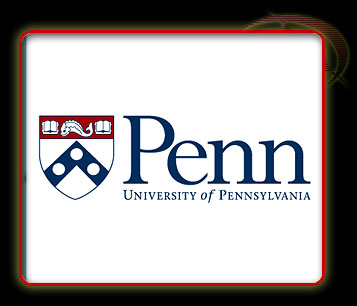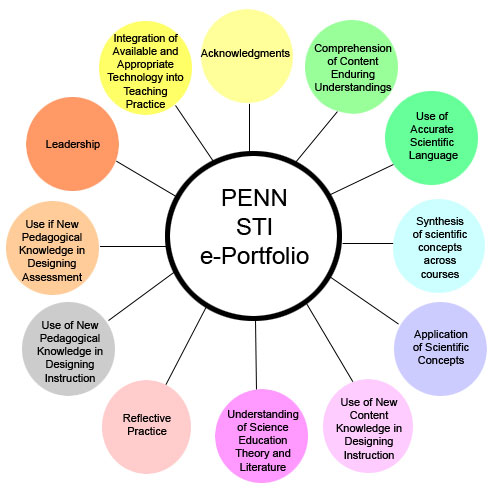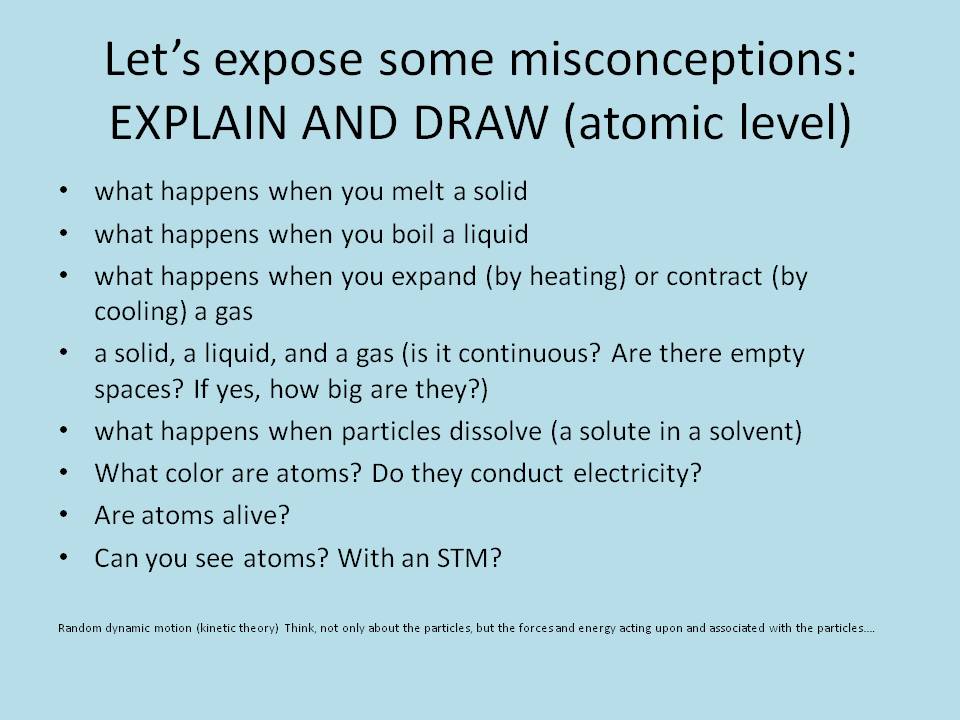Please click on images for a larger view.
Please click
on images for a larger view.
| Later Evidence: | ||||
| Evidence
#1: Examples of student answers: Pre-assessment gauging misconceptions about the particulate nature of matter SEPTEMBER 2008 |
||||
The first piece of later evidence shows the student pre-conceptions that I became aware of by administering a pre-assessment, a practice that grew out of my understanding of constructivist theory and how preconceptions affect the way a learner interacts with information. I used this pre-assessment before my unit on phases of matter and gases. I had not conscientiously used pre-assessments in my teaching before, and thus, I had little ability to access the pre-existing conceptions or novice understanding my students possessed before doing end-of-unit testing. By this time, it would be too late to change the way I would teach to specifically address student deficits in understanding. Instead, I deliberately changed my instruction to stress correct conceptual understandings that challenge misconceptions (e.g. saying or reminding students repeatedly "atoms do NOT have a color--color is a macroscopic property, on a large scale--you do NOT see color on the atomic scale--atoms are smaller than a wavelength of visible light!!! even if you see a color on these animations, that's just to make it look nice!) and more deliberately include more animations and visualizations that would debunk other miconceptions. While I have not yet integrated pre-assessments into all of my units, I am working on making them a consistent part of any lesson I create or modify in the coming year, especially because they have immense value in directing how I need to teach and what I need to teach to best increase learning in a particular group of students. Furthermore, it is important to note that I asked my students to EXPLAIN, so that I could better assess the correctness of their conceptual understanding. |
||||
| Evidence
#2: Formative assessments (UNGRADED) and related summative assessment (GRADED) for 3 related gas pressure demonstrations APRIL 2009 |
||||
The second piece of later evidence shows how I integrated the use of formative assessments in my practice. I had not conscientiously used formative assessments in my pedagogy before this year. However, after reading Roth (2006) in Edu636, I better understood the iterative aspect of knowledge construction and how the teacher needs to work with what the learner already knows or the way in which knowledge is being constructed (rather than assuming that it does not matter). I became aware of the need to give immediate feedback to students and to provide a non-threatening manner of assessing how I needed to teach. The professional development on demonstrations given by Mark Hayden, Mark Bruder, Jenny Line, and Mike Dappalone in Edu636 also provided the resources and the inquiry-structure (of P.O.E.--predict, observe, and explain) that I modified for my worksheets. I used this sequence of assessments (2 formative and 1 summative) in the middle of my gas unit. In this evidence, you can see that the first two assessments show students two different (but related) phenomena that are grounded in an understanding of gas pressure. By showing two different phenomena and requiring students to predict, observe, and explain both, students had to elicit what they already knew and differentiate between what ideas were consistent and fundamental for understanding both demonstrations and what was unimportant. Furthermore, by marked the assignment quickly and then having a class discussion and reviewing how these phenomena were occuring, I provided students with helpful, individualized feedback, and students had ample opportunity to correct their novice conceptions. After these two formative assessments, I evaluated whether these concepts were learned in a summative assessment based on another demonstration that was different, but related to the first two the students had seen. Note that I asked students to EXPLAIN rather than just list or give me answers based on algorithmic ability. |


